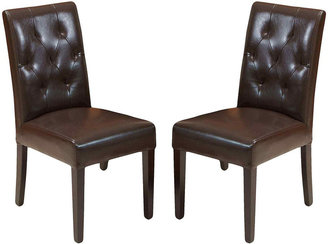
This Image is rated 27 by BING for keyword Jcpenney Dining Room Sets, You will find it result at BING.COM.
IMAGE Deep Information FOR JCPenney Raymond Set of 2 Bonded Leather Parsons Dining Chairs 's IMAGE| TITLE: | JCPenney Raymond Set of 2 Bonded Leather Parsons Dining Chairs |
| IMAGE URL: | https://img.shopstyle-cdn.com/xim/db/8b/db8b13ec7db5f54e0474be827225f8d5.jpg |
| THUMBNAIL: | https://tse2.mm.bing.net/th?id=OIP.6_nwrd2e4l7uCYYONgkr-QEsDf&pid=Api&w=243&h=181 |
| IMAGE SIZE: | 14951 B Bs |
| IMAGE WIDTH: | 328 |
| IMAGE HEIGHT: | 244 |
| DOCUMENT ID: | OIP.6_nwrd2e4l7uCYYONgkr-QEsDf |
| MEDIA ID: | 92A40E33C630A1D72509DC25941EF55CC2851AD7 |
| SOURCE DOMAIN: | shopstyle.com |
| SOURCE URL: | http://www.shopstyle.com/g/living/jcpenney/raymond-set-of-2-bonded-leather-parsons-dining-chairs |
| THUMBNAIL WIDTH: | 243 |
| THUMBNAIL HEIGHT: | 181 |
Related Images with JCPenney Raymond Set of 2 Bonded Leather Parsons Dining Chairs
furniture shop dining room furniture shop living room furniture
Dining room. bobs dining room sets furniture cool: Marble Dining Room
160722280424682074 moreover Bookmark. on jcpenney media furniture
Room Furniture Cotton Rustic. on jcpenney furniture dining room chairs

A dining room is a room for expending food. In modern times you typically adjacent to the kitchen for convenience in providing, although in medieval times it was often on an entirely different flooring degree. Historically the dining room is furnished with a rather large dining table and a number of dining chairs; the most common shape is generally rectangular with two armed goal chairs and an even number of un-armed side chairs along the long backs .
History
In the Middle Ages, upper class Britons and other European nobility in palaces or large-scale manor house dined in the largest foyer. This was a large multi-function room capable of seat the bulk of the population of the house. The clas would sit at the head table on a raised dais, with the rest of the population arrayed in order of decreasing rank away from them. Tables in the largest vestibule would tend to be long trestle tables with terraces. The sheer number of people in a Great Hall mean it would probably have had a busy, bustling atmosphere. Suggestions that it would also have been quite smelly and smoky are probably, by the standards of the time, unfounded. These chambers had huge chimneys and high ceilings and there would have been a free flowing of air through the several door and window openings .
It is no doubt that the owners of such belongings began to develop a preference for more intimate meets in smaller' parlers' or' privee parlers' off the main hall but this is thought to be due just as much to political and social changes as to the greater convenience afforded by such rooms. In the first instance, the Black Death that ruined Europe in the 14 th Century caused a shortage of labour and this had led to a breakdown in the feudal system. Likewise the religion abuses after the dissolution of the convents under Henry VIII made it unwise to talk freely in front of large volumes of people .
Over time, the grandeur took more of their snacks in the parlour, and the parlour became, functionally, a dining room( or was split into two separate rooms ). It likewise moved farther from the Great Hall, often accessed via grand ceremonial staircases from the dais in the Great Hall. Eventually dining in the Great Hall became something that was done primarily on special moments .
Toward the beginning of the 18 th Century, a structure emerged where the ladies of the members of this house would recede after dinner from the dining room to the drawing room. The gentlemen would remain in the dining room having beverages. The dining room tended to take on a more masculine tenor as a result .
Comments
Post a Comment